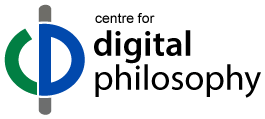Representações mentais ou neurais: justificando a terminologia utilizada na neurociência cognitiva
DOI:
https://doi.org/10.15448/1984-6746.2020.2.35387Palavras-chave:
representação neural, representação mental, neurociência cognitiva, WittgensteinResumo
Neste artigo, investigamos se um dos usos mais comuns do conceito de representação é justificável, sugerindo as condições sob as quais ele pode ser aceito e como pode ser relacionado aos estados mentais. Apresentamos estados mentais em termos de experiências privadas e eventos públicos. Argumentamos que uma representação é uma relação que envolve três elementos principais, bem como o usuário da representação, e defendemos que as condições nas quais podemos conceber a atividade neural como representativa são definidas pelo contexto da observação de uma correlação entre eventos públicos e padrões de atividade neural. Nosso objetivo é demonstrar que a atividade neural pode ser vista como representacional e não representacional - mas constitutiva - dependendo se estamos considerando eventos públicos sob a perspectiva do observador, ou se estamos considerando experiências privadas sob a perspectiva subjetiva.
Downloads
Referências
BAR ON, D. Speaking my Mind. New York: Oxford University Press, 2004. https://doi.org/10.1093/0199276285.001.0001. DOI: https://doi.org/10.1093/0199276285.001.0001
CARLSON T. A; RITCHIE J. B.; KRIEGESKORTE, N.; DURVASULA, S.; MA, J. Reaction time for object categorization is predicted by representational distance. Journal of Cognitive Neuroscience, Cambridge, Mass., v. 26, n. 1, 1, p.132–142, 2014. https://doi.org/10.1162/jocn_a_00476. DOI: https://doi.org/10.1162/jocn_a_00476
CHAREST I.; KRIEGESKORTE, N. The brain of the beholder: honouring individual representational idiosyncrasies, Language, Cognition and Neuroscience, [s. l.], v. 30, n. 4, 367- 379, 2015. https://doi.org/10.1080/23273798.2014.1002505. DOI: https://doi.org/10.1080/23273798.2014.1002505
CICHY R. M.; PANTAZIS, D.; OLIVA, A. Resolving human object recognition in space and time. Nature Neuroscience, London, v. 17, p. 455-462, 2014. https://doi.org/10.1038/nn.3635. DOI: https://doi.org/10.1038/nn.3635
CLARK A. Predicting peace: An End to the Representation Wars. In: METZINGER, T.; M. Windt, J. Open Mind. 7.th ed. Frankfurt am Main: MIND Group, 2015. p. 1-7.
CLARK A. Busting out: predictive brains, embodied minds, and the puzzle of the evidentiary veil. Noûs, 2016. Disponível em: doi: 10.1111/nous.12140. Acesso em: 02 mar. 2020. https://doi.org/10.1111/nous.12140. DOI: https://doi.org/10.1111/nous.12140
DECHARMS, R. C.; & ZADOR, A. Neural representation and the cortical code. Annual review of neuroscience, Palo Alto, Calif., US, v. 23, n. 1, 613-647, 2000. https://doi.org/10.1146/annurev.neuro.23.1.613. DOI: https://doi.org/10.1146/annurev.neuro.23.1.613
DENNETT, D. Content and consciousness. London: Routledge, 1969.
FIGUEIREDO, N. M. The Problem of the Unbridgeable Ontological Gap Between the Brain and Our Private Experiences in Wittgensteinian Terms. Discurso, São Paulo, v. 49, n. 1, p. 185-203, 2019. Disponível em: doi.org/10.11606/issn.2318-8863. discurso.2019.159310. Acesso em: 02 mar. 2020. https://doi.org/10.11606/issn.2318-8863.discurso.2019.159310. DOI: https://doi.org/10.11606/issn.2318-8863.discurso.2019.159310
FODOR, J. The Language of Thought. Cambridge: Harvard University Press, 1975.
HAXBY, J. V. et al. Distributed and overlapping representations of faces and objects in ventral temporal cortex. Science, New York, v. 293, p. 2425–2430, 2001. https://doi.org/10.1126/science.1063736. DOI: https://doi.org/10.1126/science.1063736
HORIKAWA, T.; KAMITANI, Y. Generic decoding of seen and imagined objects using hierarchical visual features. Nature Communications, v. 8, Article number: 15037, p. 1-15, 2017. Disponível em: doi: 10.1038/ncomms15037. Acesso em: 02 Mar. 2020. https://doi.org/10.1038/ncomms15037. DOI: https://doi.org/10.1038/ncomms15037
KAMITANI, Y.; TONG, F. Decoding the visual and subjective contents of the human brain. Nature Neuroscience, London, v. 8, p. 679-685, 2005. https://doi.org/10.1038/nn1444. DOI: https://doi.org/10.1038/nn1444
KANDEL E. R.; SQUIRE, L. R. Neuroscience: Breaking down scientific barriers to the study of brain and mind. Science, New York, v. 290, p. 1113–1120, 2000. https://doi.org/10.1126/science.290.5494.1113. DOI: https://doi.org/10.1126/science.290.5494.1113
KRIEGESKORTE, N.; KIEVIT, R. A. Representational geometry: integrating cognition, computation, and the brain. Trends Cognitive Science, [s. l.], v. 17, p. 401–12, 2013. https://doi.org/10.1016/j.tics.2013.06.007. DOI: https://doi.org/10.1016/j.tics.2013.06.007
QUIROGA, R. Q.; PANZERI, S. Principles of neural coding. [s. l.], CRC Press, 2013. https://doi.org/10.1201/b14756. DOI: https://doi.org/10.1201/b14756
SHAPIRO, L. Embodied cognition. [S. l.]: Routledge, 2011. https://doi.org/10.4324/9780203850664. DOI: https://doi.org/10.4324/9780203850664
SHEA, N. Neural mechanisms of decision-making and the personal level. In: FULFORD, K. W. M.; DAVIES, M.; GIPPS, R. G. T.; GRAHAM, G.; SADLER, J. Z. G.; THORNTON, T. (Ed). The Oxford Handbook of Philosophy and Psychiatry. Oxford: Oxford university press, 2013a. p. 1063-1082. https://doi.org/10.1093/oxfordhb/9780199579563.013.0062. DOI: https://doi.org/10.1093/oxfordhb/9780199579563.013.0062
SHEA, N. Naturalising representational content. Philosophy Compass, [S. l.], v. 8, n. 5, 496–509, 2013b. https://doi.org/10.1111/phc3.12033. DOI: https://doi.org/10.1111/phc3.12033
SLEZAK, P. The tripartite model of representation. Philosophical Psychology, Abingdon, v. 15, n. 3, p. 239-270, 2002. https://doi.org/10.1080/0951508021000006085. DOI: https://doi.org/10.1080/0951508021000006085
WITTGENSTEIN, L. Philosophical Investigations. Trad. G. E. M. Anscombe, P. M. S. Hacker and Joaquim Shulte. Oxford,UK: Wiley Blackwell, 2009.
Downloads
Publicado
Como Citar
Edição
Seção
Licença
Copyright (c) 2020 Veritas (Porto Alegre)

Este trabalho está licenciado sob uma licença Creative Commons Attribution 4.0 International License.



















